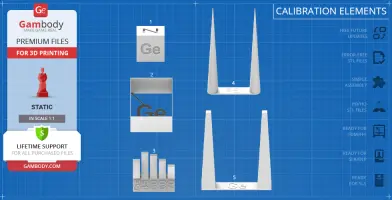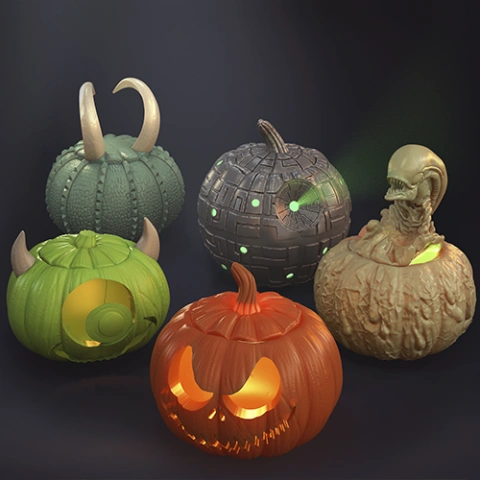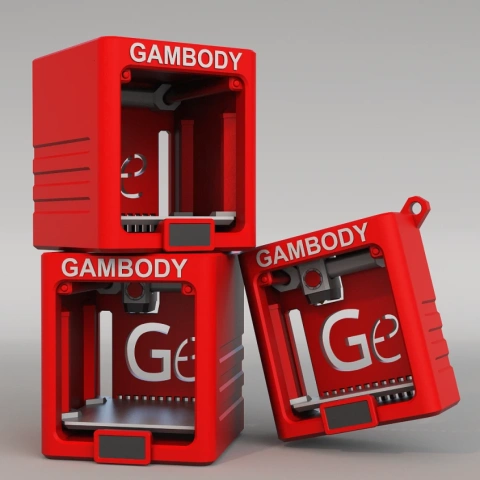Files
3D model format
Stereolithography (.stl)
Total files
Slicer settings
not available
Mesh error check
not specified
Support
Lifetime support from Gambody team
Update requests
not specified
Model versions
FFF/FDM
Assembly method
not specified
Features
Additional details
Part of diorama
No
Special pack included
No
You will get instant access to the STL files of Calibration Elements for 3D Printer after completing your purchase. Simply add the model to your cart and check out using PayPal, credit or debit card, Apple Pay, Google Pay, Alipay, or other available payment methods.
Watch the assembly video for Calibration Elements for 3D Printer, and explore more tutorials, behind-the-scenes content, 3D printing timelapses, and painting guides on the official Gambody YouTube channel.
This 3D Model of Calibration Elements consists of files in StereoLithography (.Stl) format that is optimized for 3D printing.
Before printing the files, we strongly recommend reading the PRINTING DETAILS section.
WHAT WILL YOU GET AFTER PURCHASE?
- 4 Calibration Elements STL files for FFF/FDM - files for all versions are available for download
- Calibration cube: 20 x 20 x 20 mm.
- Hollow calibration cube: 30 x 30 x 30 mm, wall thickness: 0.4 mm.
- Retraction towers (standard, sharpened)
- Overhang angle calibration model
Detailed information about this 3D printing model is available in the DESCRIPTION section.
Before printing, take a look at Printing Details for recommended settings and tips to achieve better results.
Calibration cube: 20 x 20 x 20 mm.
The calibration cube will help you configure your 3D printer to achieve maximum accuracy and precision. To measure a calibration cube, once printed, you should use calipers to measure all three sets of sides of the calibration cube. It will help you calibrate X, Y, Z dimensions and set the correct printing settings. The acceptable deviation is ±0.05mm. You can also detect such issues as 3d printing ghosting, Z wobbling, and bottom layer bulging.
Hollow calibration cube: 30 x 30 x 30 mm, wall thickness: 0.4 mm.
You can use this cube to test your 3d printer parameters, such as flow and layer shifting. You have to print the cube in 1 layer and check it for over-extrusion (too much filament is extruded during a print) and under-extrusion (too little filament is extruded during a print). It can help detect such a problem as layer shifting when the layers of the printed object shift from their intended positions.
Retraction towers (standard, sharpened).
Retraction towers serve for measuring retraction distance, time, and speed. They help to detect the problem during which the nozzle leaks excess filament over the printed part, resulting in a mess of plastic strands that look like cobwebs. There are several Cura retraction settings to modify, including retraction distance, retraction speed, and minimum travel distance, and knowing how these parameters affect the printing process is a great weapon in the fight against stringing.
Overhang angle calibration model.
To find the optimal angle you should print the model and choose the optimal value and set it in your support settings. The general rule of printing slopes (overhangs) is that they shouldn’t exceed 45 degrees. The idea behind this is to ensure each successive layer has enough support to build upon.
Average customer rating (5 reviews)
4.4
Ratings breakdown
Click a star rating to filter reviews
Overall experience
Level of detail in the model
4.4
Model cut quality and assembly guide
4.4
Clarity and accuracy of the model page
4.4
Level of detail in the model
5
Model cut quality and assembly guide
5
Clarity and accuracy of the model page
5
Level of detail in the model
5
Model cut quality and assembly guide
5
Clarity and accuracy of the model page
5
Level of detail in the model
2
Model cut quality and assembly guide
2
Clarity and accuracy of the model page
2
Level of detail in the model
5
Model cut quality and assembly guide
5
Clarity and accuracy of the model page
5
Level of detail in the model
5
Model cut quality and assembly guide
5
Clarity and accuracy of the model page
5
To avoid printing issues and achieve the best quality, we highly recommend applying the following settings:
Generic
Below you can find printing recommendations for Cura, Simplify3D, Slic3r and PrusaSlicer software.
Disclaimer: The following printing settings are a recommendation, not an obligation. The parameters can vary depending on the peculiarities of your 3D printer, the material you use, and especially the particular assembly part you are working with. Each part that any model comprises often needs preliminary review, and you are free to tweak the settings the way you find suitable.
Note:
- You can scale up the model (downscaling for FFF/FDM 3D printers is not recommended!);
- All connectors should be printed at 100% Infill.
Cura printing recommendations:
These are averaged settings which were tested in the Cura 5.2.1 slicer. Test models were printed on Anycubic Vyper, Creality Ender 3 Pro with PLA filament.
To avoid printing problems, we recommend the following settings: download
Simplify3D printing recommendations:
These are averaged settings which were tested in the Simplify3D 5.0.0 slicer. Test models were printed on Anycubic Vyper, FLSUN v400, Ender3 S1 with PLA filament.
To avoid printing problems, we recommend the following settings: download
Slic3r printing recommendations:
These basic 3D printing settings recommendations for beginners were tested in Slic3r 1.3.0 software. Test models were printed on Ultimaker 2, Creality Ender 3, Creality Cr-10S pro v2, Anycubic I3 Mega, Anycubic I3 MegaS, Anycubic Vyper with PLA and PetG filaments.
To avoid printing problems, we recommend the following settings: download
PrusaSlicer printing recommendations:
These basic 3D printing settings recommendations for beginners were tested in PrusaSlicer 2.3.1. Test models were printed on Ultimaker 2, Creality Ender 3, Creality Cr-10S pro v2, Anycubic I3 Mega, Anycubic I3 MegaS, Anycubic Vyper with PLA and PETG filaments.
To avoid printing problems, we recommend the following settings: download















